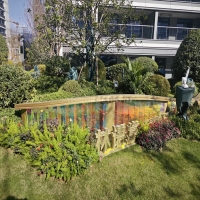Welcome to the website for landscape facilities products and knowledge.
What are the most important factors in ensuring the table’s resistance to extreme temperatures or weather conditions?
Creating outdoor tables that withstand extreme temperatures and weather conditions requires careful consideration of multiple crucial factors. The selection of appropriate materials stands as the primary defense against environmental challenges. Naturally weather-resistant woods like teak and cedar offer inherent protection, while metals such as aluminum and stainless steel provide excellent heat resistance. Synthetic materials including high-density polyethylene and polywood demonstrate remarkable stability across temperature fluctuations.
Beyond material choice, protective treatments and coatings significantly enhance weather resistance. Powder coatings create durable, heat-resistant surfaces that prevent rust and corrosion, while specialized sealants protect wooden surfaces from moisture penetration and UV damage. These treatments form essential barriers against rain, snow, and intense sunlight.
Construction methodology plays an equally vital role in ensuring long-term durability. Proper joinery techniques that accommodate natural material expansion and contraction prevent structural damage during temperature changes. Adequate drainage systems integrated into table designs prevent water accumulation, reducing the risk of freeze-thaw damage in colder climates. The inclusion of ventilation spaces helps dissipate heat efficiently during hot weather conditions.
Environmental considerations extend to hardware selection, where stainless steel or coated fasteners resist corrosion better than standard options. The table's structural design must account for wind resistance through appropriate weight distribution and stable leg configurations. For areas experiencing extreme temperature variations, materials with similar thermal expansion coefficients ensure components expand and contract uniformly.
Regular maintenance, though often overlooked, remains fundamental to preserving weather resistance. Periodic cleaning, reapplication of protective coatings, and prompt attention to minor damages significantly extend the table's lifespan. Proper winter storage or protective covers provide additional defense during harsh weather periods.
Ultimately, successful outdoor table performance in extreme conditions results from the synergy between material science, engineering principles, and proactive care. By addressing each factor comprehensively, manufacturers and consumers can ensure outdoor furniture maintains its functionality and appearance through seasonal challenges and temperature extremes.
Related search:

Recommendation
Metal and acrylic color-changing combined curtain wall for large-scale public landscape facilities